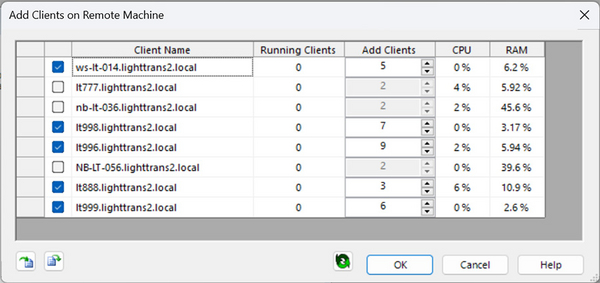High-Speed Simulation with Distributed Computing
Simulation Techniques on Multicore Computers
VirtualLab Fusion comes with many interoperable simulation techniques and a unique platform for connecting them. That provides simulations as accurate as needed and as fast as possible with respect to the selection of techniques. By applying parallelized algorithms in combination with a multicore computer, the simulation speed can be further increased. In VirtualLab Fusion most simulation algorithms enable parallel processing and benefit from multicore computers. How to significantly increase the simulation speed further is discussed next.
Collection of Elementary Simulation Tasks
Optical modeling and design tasks typically demand the processing of many elementary simulations. The reasons for that are manifold and include examples like the following ones.
- Polychromatic sources and ultrashort pulses are represented by a set of monochromatic fields which must be propagated through the system. Each monochromatic field leads to an elementary simulation.
- Multimode sources emit numerous lateral modes, e.g., in case of a multimode laser or an extended source like an LED. Each mode leads to an elementary simulation.
- Processing a full field of view (FOV), e.g., for imaging systems and AR glasses, results in an elementary simulation per field of the FOV.
- Scanning system parameters, e.g., moving the detector position to analyze the focal region, requires one elementary simulation per parameter configuration.
- Tolerancing analyzes many configurations to investigate the sensitivity of the optical system on variations of parameters. Each system configuration leads to an elementary simulation.
- Optimization with modern techniques, like the evolution algorithm, demands many elementary simulations per optimization step.
High-Speed Processing
In each scenario or its combinations, a collection of elementary simulations must be processed. Instead of performing one simulation after the other, distributed computing enables the concurrent processing of simulations of the collection. The achieved simulation speed directly scales with the size of the applied computer network.
User-Friendly Distributed Computing
The generation of the collection of elementary simulations is done inside the Parameter Run as it is the case without distributed computing. No change of the workflow is needed. A dialogue enables the configuration and control of the computer network. Then, VirtualLab Fusion processes the collection of elementary simulations with the power of the assigned network. In short: users of VirtualLab Fusion enjoy the power of distributed computing with a few extra clicks.
USE CASES
Coherence Measurement with White Light Interferometry
Coherence Measurement with White Light Interferometry
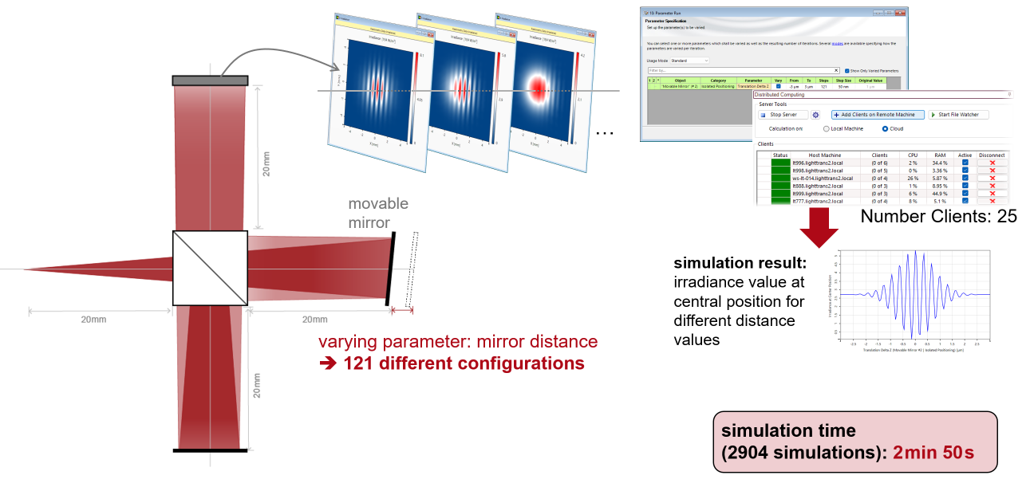
This use case combines a polychromatic source (24 wavelengths) with a parameter scan for the mirror position
(121 positions) in a Michelson interferometer setup. One of the resulting 2,904 elementary simulations takes less than a second on a standard computer. Without distributed computing the entire collection takes 46 min 55 sec.
With a network of six local multicore PCs distributed computing is performed with 25 clients and the CPU time reduces to 2 min 50 sec.
Read more.
Test Image Simulation of an AR Waveguide
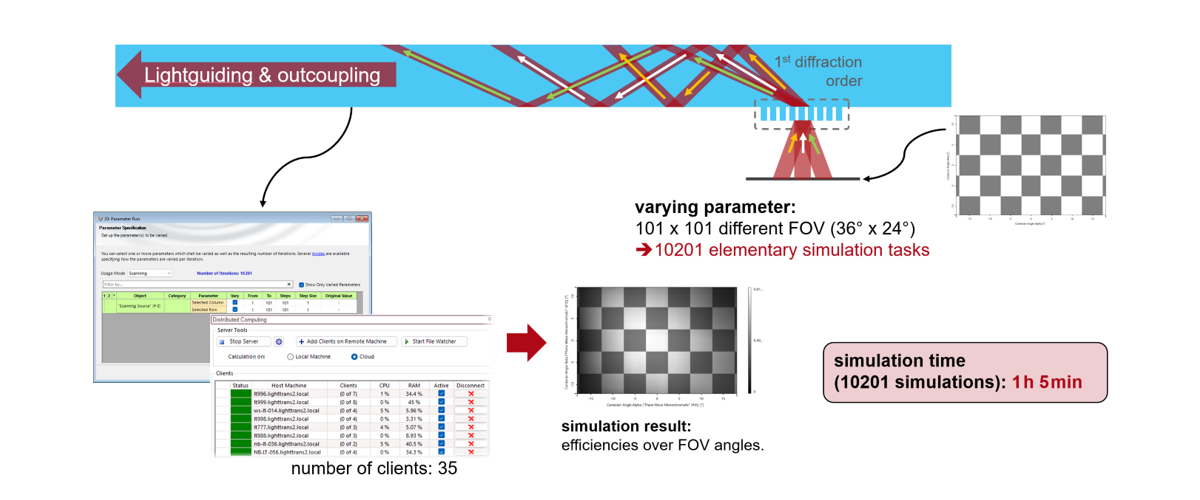
In this use case a full FOV test image (sampled by 101 angles in x-direction and 101 in y-direction which leads to 10,201 angles in total) is propagated through a waveguide device. One elementary simulation with hundreds of rigorous grating evaluations requires about 7seconds. That results in an estimated total calculation time for whole image of more than 31hours. By using a network of eight multicore PCs which provide 35 clients distributed computing reduces the time for simulation to 1hour 5min.
Investigation of Diffraction in Interferometer Caused by Sharp Relief
Investigation of Diffraction in Interferometer Caused by Sharp Relief – Analysis by Using Distributed Computing
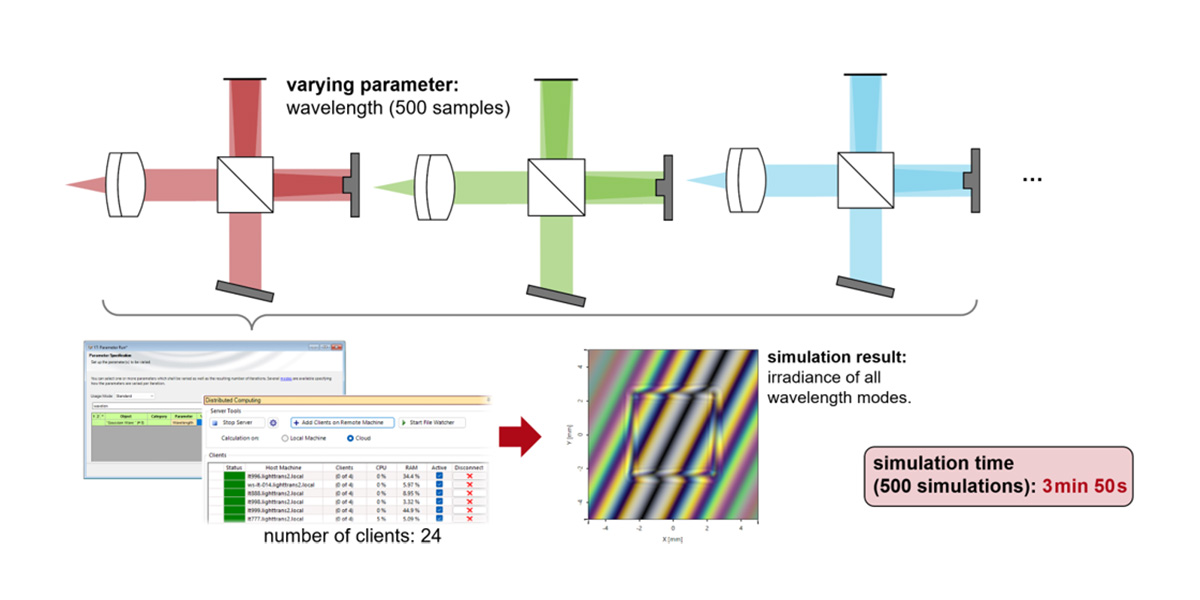
Interferometry setups can be used for the investigation of samples. Within this use case we analyze a podium sample by a Michelson interferometer. The analysis is done for a set of 500 different wavelength. The total simulation time for this would be nearly one hour.
By using the distributed computing technique in VirtualLab Fusion with a network of 24 clients on 6 multicore PCs the simulation time can be reduced to less than 4 minutes.
Usage of Distributed Computing
Usage of Distributed Computing

The fast delivery of accurate results from a given optical setup is the main task of any optical simulation software. Complex tasks that require the solution of many individual simulations, such as parameter sweeps or optimizations, can still require significant computation times.
This can be drastically shortened by distributed computing, a concept where individual simulations of a larger package are computed in parallel with each other, using multiple computers and/or servers to speed things up. This use case demonstrates how distributed computing can be used in VirtualLab Fusion.
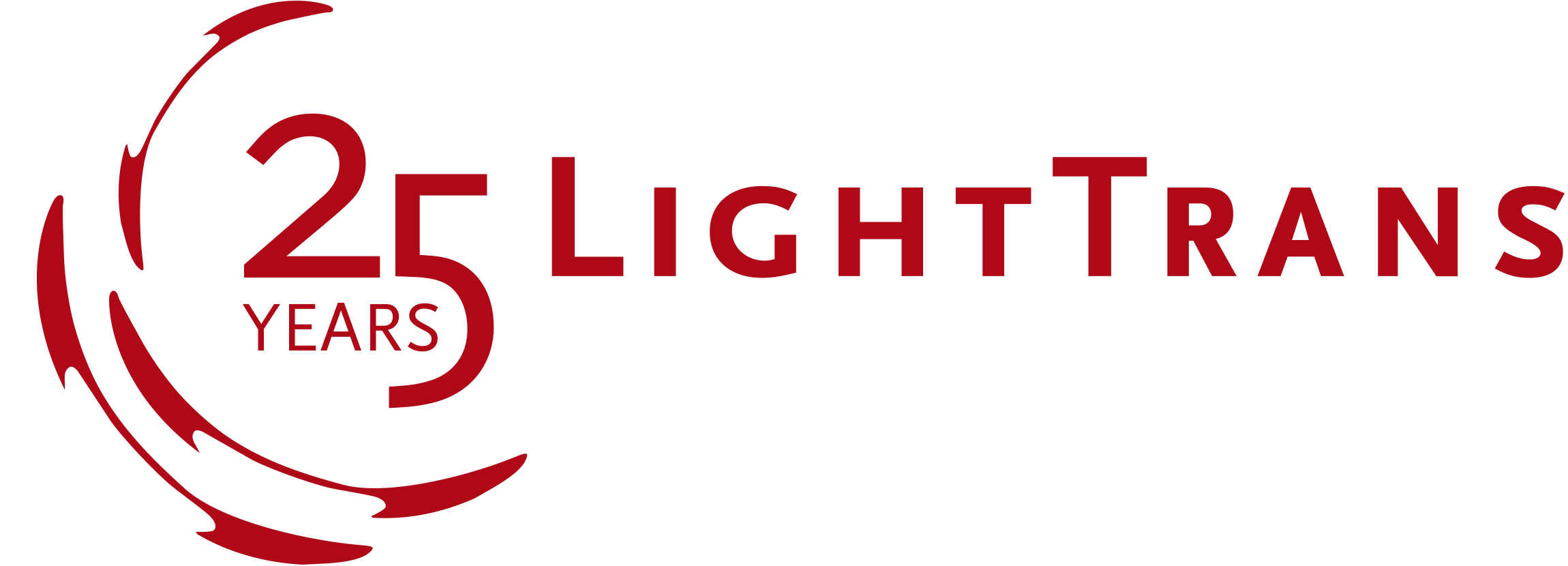



 APPLY FOR EARLY ACCESS Program: Distributed Computing
APPLY FOR EARLY ACCESS Program: Distributed Computing

